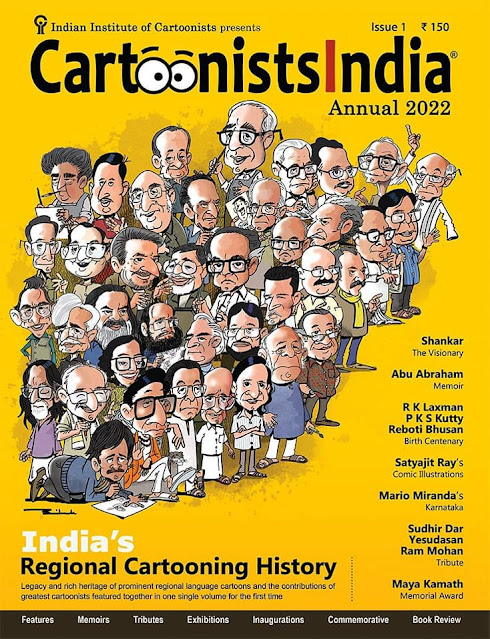No one who has caught a big fish will walk home through the back alley. The cave man surely didn’t. The cave man was just blowing his own trumpet but ingenious men around got the idea. Advertising soon came about.

Textbooks say, advertising today, is a form of communication that typically attempts to persuade customers to purchase or to consume more of a particular brand of product or service. The average man on the street however understands things differently. Say it with flowers. Say it with pictures. Whatever be it, just say it. Or else how will you convince people that you are good. This is precisely the advertising.
The Origins
Egyptians used papyrus to make sales messages and wall posters. Commercial messages and campaign displays have been found in Europe and ancient Arabia. Rock painting for commercial advertising is another manifestation of an ancient advertising form, which is still present in many parts of Asia, Africa, and South America .
As education spread and well printing developed, advertising expanded to include handbills. In the 17th century advertisements started to appear in weekly newspapers in England. These early print advertisements were used mainly to promote books and newspapers.
Philadelphia – Where It All Started
It was Pennsylvania Gazette, published by Benjamin Franklin from Philadelphia in 1729 with a page full of advertisements.
But the road ahead was not smooth in the beginning. Many publications banned advertisements while others limited the space to one column width. However by 1870 there were over 5,000 newspapers in circulation which carried advertisements and the demand for advertising services grew rapidly.
The Strategy of Early Advertising
In June 1836, French newspaper La Presse introduced paid advertising allowing it to lower its price, extend its readership to increase its profitability. And suddenly people realized that advertising paid.
The strategy of early advertising was to convince the buyer of the quality of the product. A realistic illustration of the product, numerous descriptions praising its virtues from prominent citizens were commonly used. Later product claims gave way to elaborate stories of purchases that rewarded the buyer with success or popularity.
Early Advertising Agencies in Philadelphia Volney B. Palmer opened the first advertising agency in Philadelphia in 1841 and is possibly the first person to use the term "Advertising Agency."
N. W. Ayers & Son. In 1869, 21 year old Francis Wayland Ayer opened a firm named after his father, N. W. Ayer. The firm was so successful that by 1877 it acquired the remains of the original Volney Palmer agency and therefore claimed to be the ‘oldest advertising firm in the USA’.
They created some of the most enduring slogans in advertising history, including: "When it rains it pours", advertising salt for Morton Salt. "A diamond is forever", advertising diamonds for De Beers, "Reach out and touch someone", advertising AT&T’s long-distance telephone services. N. W. Ayer shifted to New York City in 1973 and existed till 2002.
Some Interesting facts:
- The turning point in the history of advertising came in the year 1450 when Johann Gutenberg invented the printing press. Advertising no longer had to produce extra copies of a sign by hand.
- Lord and Taylor (1867) is the first company to use double-column advertising in newspapers.
- John Wanamaker (1879), department store owner, places the first whole-page newspaper advertisement. He had after all a whole department to advertise.
- John E. Powers (1880), who becomes known for his advertising honesty and direct advertising style. Powers becomes known as "the father of honest advertising."
- The Graphic Design, as we know it today originated in the late 19th century as a tool for advertising. William Addison Dwiggins, who first used the term "Graphic Designer" described the importance of typography in advertising design.
- Branding begins in 1904. Children were now not happy with just a candy or a bar of chocolate. They wanted a Cadbury or a Nestle.
- The first annual advertising show opens in New York City in 1906 . The "Age of Advertising" officially begins.

The Advertising Firsts in India
Right from the days when cities and markets first sprang up in India , hawkers had been calling out their wares. We just didn’t realize they were “advertising”. They then graduated to advertising in the papers and distributing handbills . However, advertising proper began in India with classified advertising in the 18th century. Printed advertisements appeared for the first time in weekly newspaper Hickey's Bengal Gazette. B.Dattaram & Co in Bombay , formed in 1905 claims to be the oldest existing Indian agency. ‘Dalda’ was the first major example of a brand and a marketing campaign specifically conceived for Indian consumers developed in 1939.
----------------------
Source: History of Advertising and Publishing By Lisa Marie Heitman , Wikipedia, Advertising- The Mother of Graphic Design by Stephen Heller
Acknowledgement : Thanks to Yasmin Ali for her valuable inputs.
Cartoons: Bibek Sengupta






